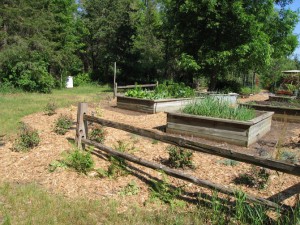Beltane Full Dyan Moon
 Paula Westmoreland from Ecological Gardens came out today and gave us a walk through, explaining the plants and their relationships. The real distinctiveness of permaculture lies in developing and nurturing those relationships, using plants together in ways that are mutually beneficial. An easy to understand example is the familiar legume family, a group of plants that fix nitrogen in the soil. Since most plants deplete nitrogen in the soil, following a planting of a non-legume, especially if it’s a heavy feeder like, say, tomato or corn, with a legume helps restore the soil chemistry.
Paula Westmoreland from Ecological Gardens came out today and gave us a walk through, explaining the plants and their relationships. The real distinctiveness of permaculture lies in developing and nurturing those relationships, using plants together in ways that are mutually beneficial. An easy to understand example is the familiar legume family, a group of plants that fix nitrogen in the soil. Since most plants deplete nitrogen in the soil, following a planting of a non-legume, especially if it’s a heavy feeder like, say, tomato or corn, with a legume helps restore the soil chemistry.
There are also plants that tend to confuse insects with their scents; since many of those fit in the herb garden, the herb spiral sits in a key corner of the new design, fooling predatory insects as they head toward our beans and strawberries. Over time these relationships interleave and become stronger, the soil chemistry becomes healthier and the result is a stronger, less insect and disease prone garden. This long term strength of permaculture makes it a wise investment for any yard or garden.
In the orchard and our new vegetable garden design we now have clover in place of grass. It crowds out weeds, can take being stepped on and should provide good tasting honey in years to come.
The gestalt here has begun to feel real. We are less like human intruders on this oak savannah and more like c0-inhabitants, gaining from and giving back in the timeless cycle of life.
